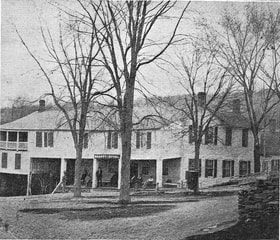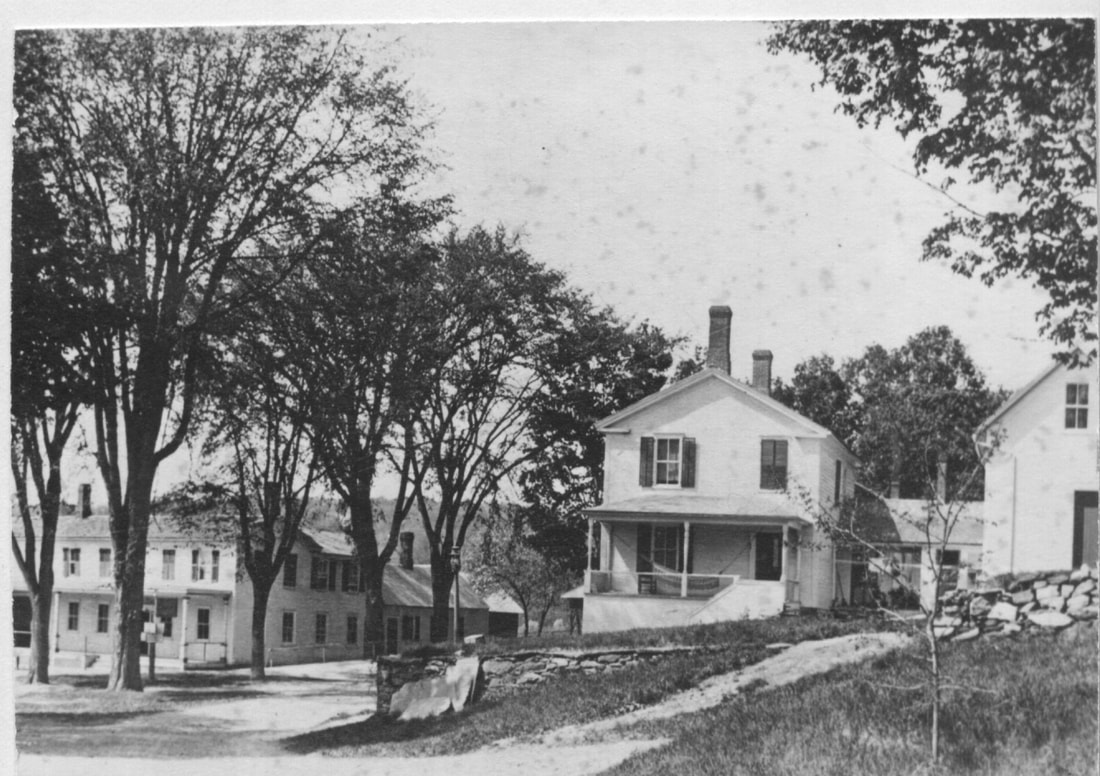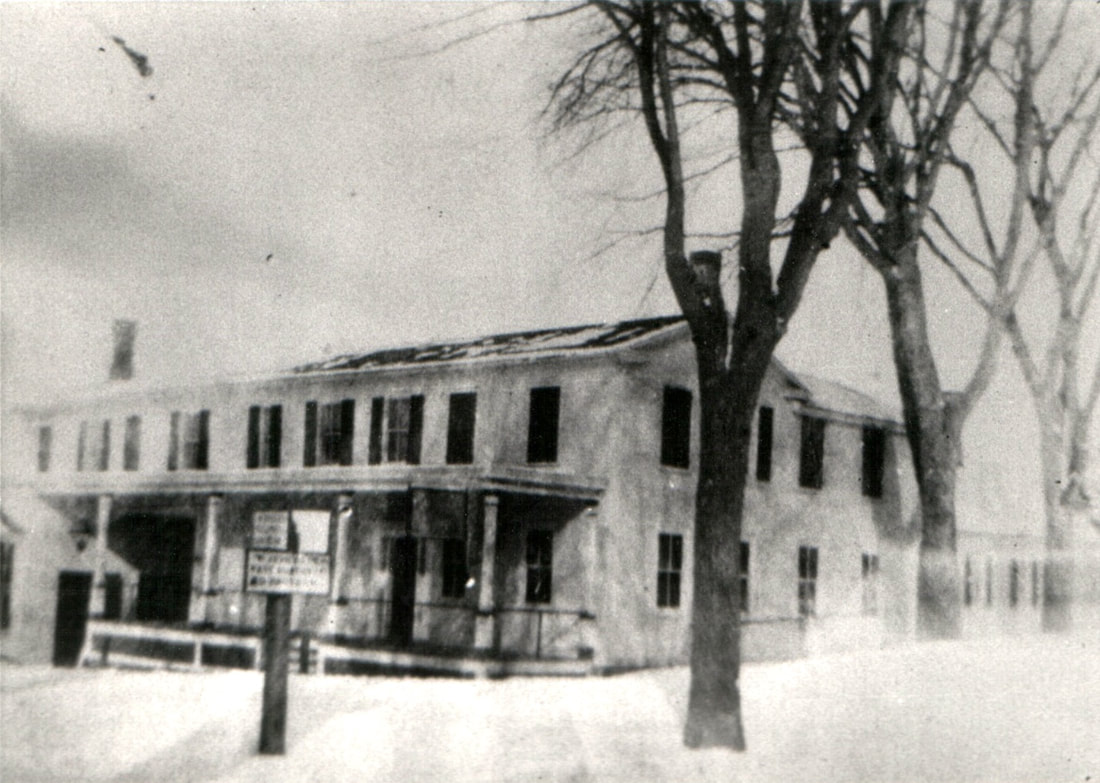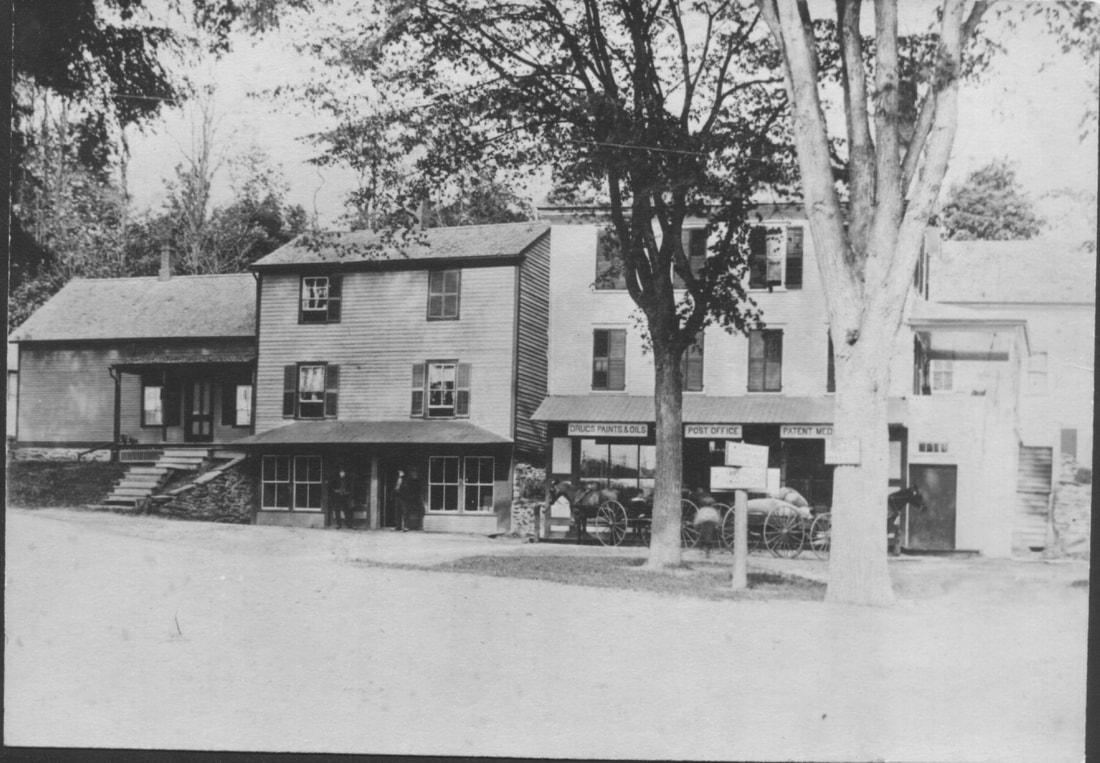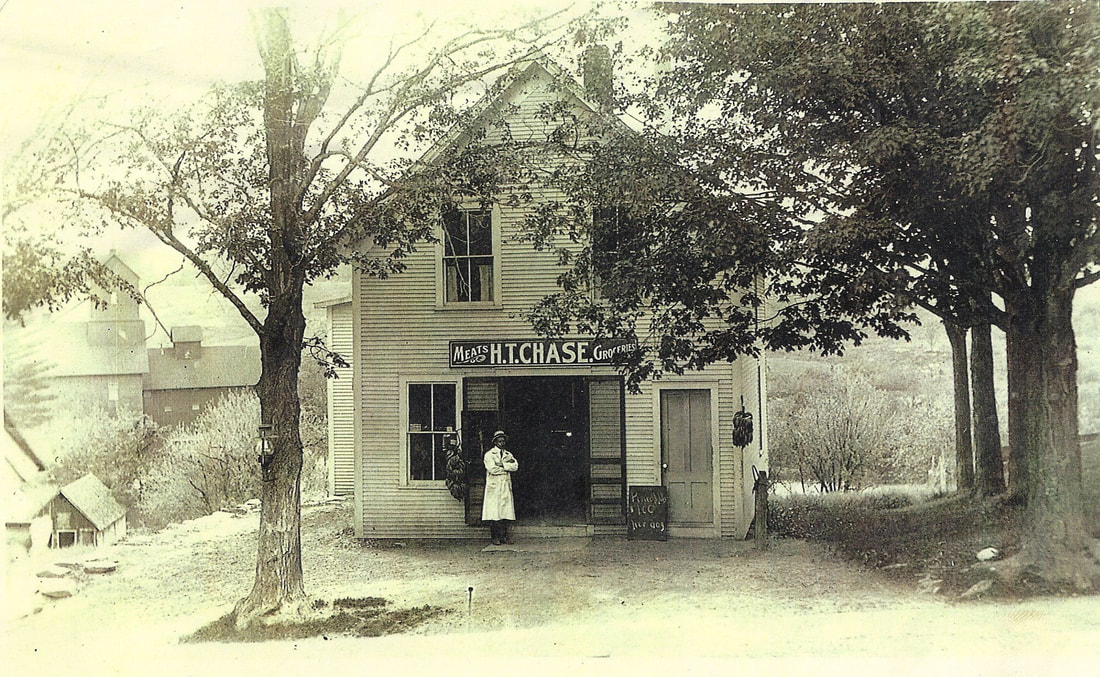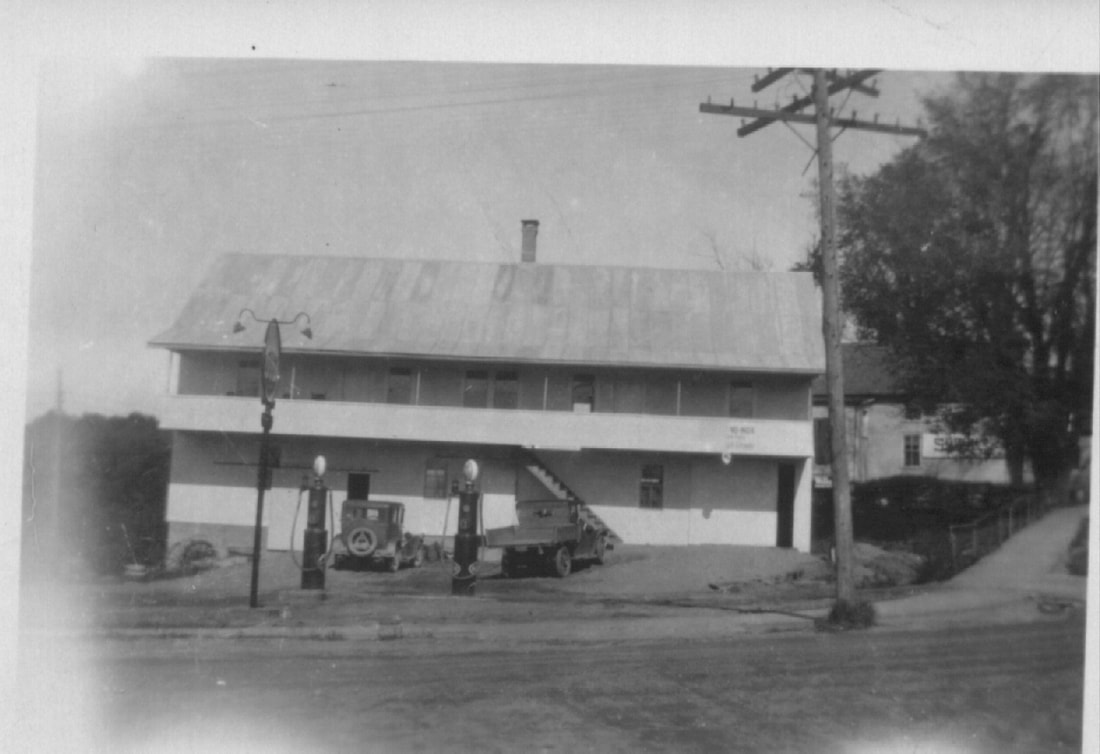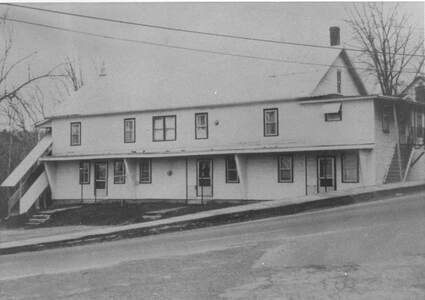The Beach House / Barney Hotel
by Gary Irish
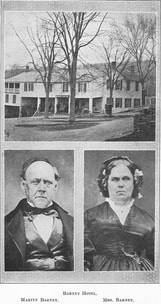 Barney Hotel,
Barney Hotel,Martin & Maria Barney
"Included one coal stove, and pipe, 6 dining room chairs, one extension table, one [unreadable] , 18 oyster plates, one kitchen range and pipe, one hair covered sofa, one hair covered rocker, 3 wooden bottom chairs in office, 1 large table in kitchen, 2 large tables in cellar, 12 extra chairs, 4 hardwood chamber sets with 2 chairs and rocker, 1 softwood chamber set with 2 chairs and rocker, 5 woven wire springs, 5 wood top mattresses, 16 window shades upstairs, 2 wash bowls and pitchers, 5 chambers, carpets in rooms 3-4-5-6 & 7, hall matting upstairs, hall oil cloth, 12 window shades below, No. 12 street lamp in archway, No. 2 hanging lamp, case and [unclear – maybe ‘chairs’] in hall, 2 bracket hanging lamps, hanging lamps in bar-room, 2 hanging lamps in chandelier in dining room, 2 bracket lamps in kitchen, 2 iron spittoons in office, 1 earthen spittoon in bar-room, 14 small glasses, 6 beer mugs, ½ pint measure and ½ pint tunnel, 1 show case, 1 large cork screw, 2 tobacco cutters, 1 small refrigerator, 1 large Baldwin refrigerator, 1 writing desk, 1 stool in office, 1 mirror, 1 clock, 1 stove and pipe in office, ice in ice house, shelves & counters in grocery store, possession to be given March 1st, 1899.”
"The Beach House was the recipient of a surprise party last Friday evening. About 40 partook of the supper, and some 15 couples enjoyed themselves by a dance in the dining room. All seemed satisfied with the evening's pleasures."
"Although the night was not very auspicious for such an entertainment last Wednesday, the music rendered in this village by the Underhill Band was very entertaining, and quite a crowd gathered from far and near to hear them. For the length of time that they have been in practice, and considering that they have no out of town talent to assist them, the boys played well. The proprietors of the Beach House fairly out done [sic] themselves in the way of entertainment, providing a splendid repast not only for the members of the band, but also for a large number of invited leading citizens of the village. A table seating 28 was loaded with good things, in the middle of which was a large cake bearing the inscription 'Underhill Band Boys'. At the close of the oyster supper the house furnished cigars for their guests, and a pleasant chit-chat followed. The band furnished music both before and after supper, and at the close of their playing they were presented with a contribution from those present amounting to $13.25." [That would equal somewhere around $375 today.]
Sheriff Reeves arrived in town on the 9:24 mail train this forenoon, having with him a bench warrant from the Chittenden County Court, directing him to take to Burlington J.H. May. They went down on the following train. The hotel was searched last Tuesday by Sheriffs Reeves and Galusha, during the absence of the proprietor. The only find was a jug said to contain cider.
“About 7:30 o’clock Saturday evening Thomas Casey entered the hotel and called for whiskey, which Mrs. May declined to furnish. A knock down followed in which May discharged his revolver, but missed and hit the floor. May’s son dealt Casey a blow on the head with a poker which left a wound taken for the bullet hole. Sunday Drs. Nay & Burdick determined no bullet had struck Casey.”
"The supper given by Jericho members of the Iron Hall to the Hall of Winooski Friday evening at the Beach House is pronounced one of the nicest suppers ever given in the village, and Mr. Hapgood, who keeps the house, is to be highly congratulated for his efforts. There were sixty-two who sat down to table. The Winooski lodge has invited this one to return the visit next Monday evening."
Big Fire in Jericho
Hotel, Livery Stable and Store-House Burned-Loss Placed At $12,000Jericho, Oct. 9 – For the second time within 18 months this village was visited with disastrous fire yesterday. The only hotel property in town together with livery and mercantile storehouses were burned and a stock of general merchandise practically ruined, involving a conservatively estimated loss of $12,000 and severely crippling the business interests of the village.
Fire was discovered at about nine o’clock in the attic of the Folsom House, owned and conducted by William Folsom. It is thought that the origin was in a defective chimney. At the time of discovery the fire had spread through the entire attic and this upper story was a mass of flames. With the inadequate means at hand, attention was immediately turned to saving the surrounding property and the wonder is that the entire village was not wiped out, there being at the time a strong south wind. A bucket brigade was formed, women passing water in the line from the neighboring mill pond shoulder to shoulder with the men.
Just west of the hotel was the general store of E.B. Williams separated only by a driveway from the burning building. The side of this store was covered with carpeting which was kept saturated with water and here it was that a heroic effort that the fire was stopped in this direction. The stable immediately in the rear of the hotel was allowed to burn as were the ice house and storehouse of E.B. Williams. The stock and carriages in the stable and the goods in the store were saved.
In the second story of the hotel were nine furnished rooms and nothing was saved here. The personal effects of the proprietor and family were taken out. Mr. Folsom estimates his loss at $6000 in all. He had an insurance of $2500 on the building and $1000 on the furniture. He has not yet fully decided but is of the opinion that he will rebuild. [In fact, he did not rebuild, but moved across the corner to the house at what is now 2 Plains Road, where he continued in the hotel business for a time after the fire.]
Mr. Williams had a stock of goods valued at about $10,000. He is at this time confined to his bed by illness and his exact loss cannot be determined. However those familiar with his business estimate the amount of damage done in this store at $5,000, all of which is by smoke and water. It is understood that this loss is covered by insurance in several different companies.
The building in which the Williams store was located is owned by Mrs. Sarah A. Jackson and she lived in the upper story. Her goods were nearly all removed with little damage and the building was well insured.
When the fire broke out, word was sent to Burlington asking aid. A crew immediately left that city with a steamer. They came by team and made two changes of horses at Essex Junction and at Essex Center, arriving here a little after eleven. They would have reached here sooner but for the fact that they were stopped at Essex Center by a report that their services were not needed. Later they were ordered on and arrived here when the fire was under control. They used a stream for some time in wetting down the ruins, and started for home a little after two o’clock.
A great deal of bravery and persistence was exhibited by those who fought the flames and it is little short of a miracle that the fire was contained to comparatively narrow bounds. Several times the roofs of surrounding dwellings caught but men were always on hand with buckets of water and hand extinguishers.
The fire, which occurred here one year and a half ago, was just across the road at the south of today’s conflagration [as noted above, that fire actually happened on January 11, 1901, over three and one half years before]. The property loss at that time was about twice the amount lost today and the two fires practically wipe out the business section of the village. It is a severe blow from which the village will not soon recover.”
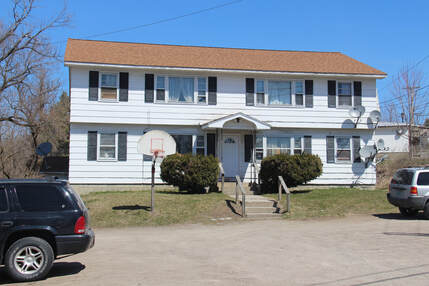 Apartment building built after the 1968 fire.
Apartment building built after the 1968 fire.
